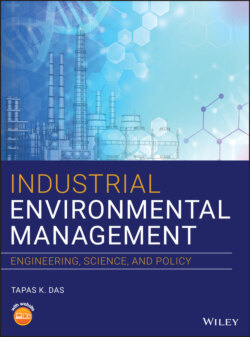Читать книгу Industrial Environmental Management - Tapas K. Das - Страница 22
1.4.1 Resource Efficiency
ОглавлениеResource efficiency reflects the understanding that current, global, economic growth, and development cannot be sustained with the current manufacturing, production, and consumption patterns. Globally, we are extracting more resources to produce goods than the planet can replenish. Resource efficiency is the reduction of the environmental impact from the production and consumption of these goods, from final raw material extraction to last use and disposal. This process of resource efficiency can address sustainability (see Chapter 10).
In this book, we will focus on the upper three options of the industrial pollution prevention hierarchy; that is, recovering the energy value in waste, treating for discharge, and arranging for safe disposal. To improve this bottom line, however, businesses should address the upper three tiers first: that is minimize generation, minimize introduction, and segregate and reuse. This is where the real opportunity exists for reducing the volume of wastes to be treated. The volume of the waste stream, in turn, has a strong influence on treatment cost and applicability. Thus, useful technologies such as membrane processes in highly flexible separation techniques for water, solvent and solute recovery, or condensation of VOCs from air are not economic at large volumetric flow rates. The focus has shifted from end‐of‐the‐pipe solutions to more fundamental structural changes in industrial manufacturing processes.
